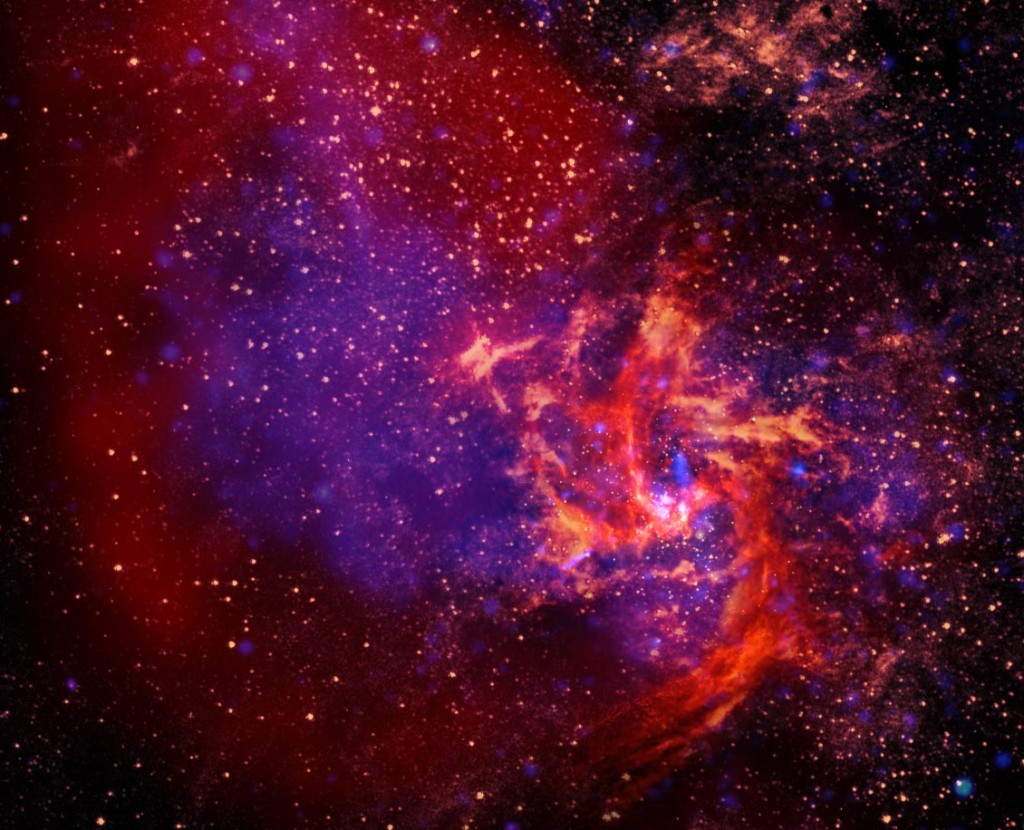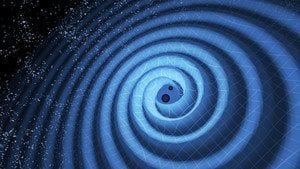Gravitational Waves
| Video by PhD student Lilli Sun from her observing session at the LIGO Livingston Observatory. |
Gravitational waves are ripples in space-time predicted over 100 years ago by physicist Albert Einstein. In 2015, a new window on the Universe was opened with the observation of gravitational waves by the LIGO–Virgo collaboration. These gravitational waves were from the inspiral and merger of two black holes, a billion light years away, each around 30 times the mass of our Sun. Since then several more observations of merging black holes have been made. In 2017, for the first time, gravitational waves and electromagnetic light where observed from the same object: the merger of two neutron stars. This observation marks the beginnings of ‘multi-messenger astronomy’ with gravitational waves.
Gravitational waves are ripples in space-time. Image by LIGO/T.Pyle
Researchers at Melbourne are part of the LIGO Scientific Collaboration and are involved in a number of aspects including data analysis and astrophysics. Our group also forms one of the nodes of OzGrav, the ARC Centre of Excellence for Gravitational-Wave Discovery started in 2017.
The transient signals from black hole and neutron star mergers observed so far by LIGO-Virgo are just the start of the story. We are searching for long-duration gravitational waves (continuous waves) from sources such as rotating neutron stars. In collaboration with the Department of Electrical and Electronic Engineering also at the University of Melbourne we are applying signal processing techniques to gravitational wave data to search for these signals.
We are also researching the sources of gravitational waves themselves: neutron stars are home to some extreme physics. Researchers here are working on understanding fundamental physics of neutron stars interiors. See our extreme objects research page for more information.
The Cosmic Microwave Background (CMB) also provides a means to search for gravitational waves. The CMB provides our earliest image of our universe. By studying it, we can learn about how the Universe began and how it evolves. In the standard model of cosmology, the early Universe undergoes an extremely rapid expansion called inflation. This rapid growth stretches space-time which leading to a background of gravitational waves at very low frequencies. Using extremely precise measurements of the CMB from instruments in Chile and the South Pole, we are searching for the imprint of gravitational waves, the ‘smoking gun’ for inflation. Our group is working on many aspects of this analysis from experimental characterization to cosmological interpretation.
Supervisor Profiles & Available Research Projects
Prof Andrew Melatos
- Theory of gravitational waves radiated by neutron stars and black holes: new sources for LIGO
- Gravitational waves from supernova explosions
- Signal templates and algorithms for gravitational wave data analysis
A/Prof Christian Reichardt
- Searches for inflationary gravitational waves
- Data analysis for large-area CMB polarization surveys

The center of our Milky Way Galaxy is anchored by a black hole that is nearly 5 million times the mass of our Sun. Surrounding it is a chaotic city of stars, gas, and dust that we call Sagittarius A. X-rays (purple) radiate from the super-hot gas trapped in the black hole’s grasp. Stars and dust grains get warmed by the constant chaos in orbit around the black hole and glow in infrared light (gold). And the enormous pools and rivers of gas shine in radio light (oranges and reds) to trace the complexity of magnetic fields in this violent neighborhood. Credit/Titles: National Radio Astronomy Observatory.
